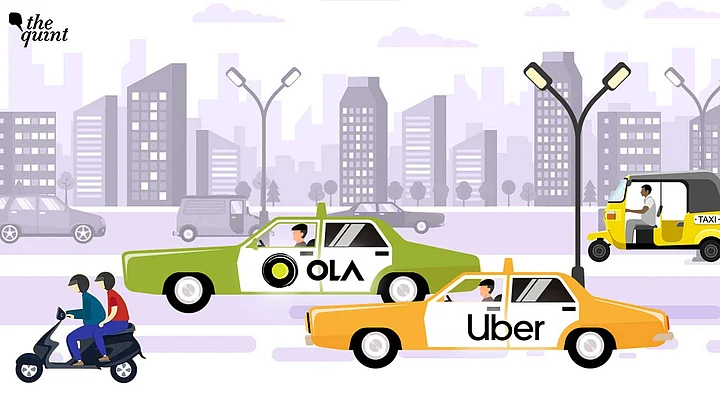On 17 May, cab aggregator company Uber presented a report to Hardeep Puri, Union Minister of Housing and Urban affairs. The report, which studied transportation trends in four Indian cities, revealed a growth in personal vehicle ownership, and an increase in two and three-wheeler usage since the COVID-19 pandemic.
The report, commissioned by Uber, and compiled by WXY Studio (a New-York based studio specialising in urban design and planning), used Uber data from February 2019 to September 2021, and studied ridership patterns in Delhi-NCR, Greater Mumbai, Bengaluru and Nagpur.
On the basis of this, the report recommended changes such as rethinking parking policies and street design.
Prabhjeet Singh, President, Uber India and south Asia, who presented the report, said that the report "outlines the role that ride-sharing platforms like ours can play in reducing traffic congestion and pollution."
Increase in Use of Two, Three-Wheelers, Longer Travel Distances: Trends Since Pandemic
Although two and three-wheelers were in use earlier too, data shared by Uber in the report showed that there has been an increase in demand for two-wheelers and three-wheelers after the lockdown. The report stated possible reasons for this -- heightened preference for socially distant personal mobility, affordability, a desire for open-air mobility, and fewer overall trips.
The report also revealed a rise in travel distances particularly with respect to two and three-wheelers. It suggested that people have been perceiving two and three-wheelers as a viable option for longer-distance trips.
In Bengaluru, for instance, the number of two and three-wheeler trips were higher than that of four-wheelers between September 2020 and September 2021.
The report revealed that weekday midday, weekend night and weekend days make up the largest shares. It added, “As a strategy to combat congestion, policymakers may seek to control peak travel time demand by incentivising off-peak business hours and limiting the times that deliveries can take place to the early morning and late night.”
The report also stated that the proportion of riders who chose pool rides (in the pre-COVID-19 period) was higher in Bengaluru. It read, “This high frequency of shared trips may be indicative of a variety of phenomena, including latent demand for public transport in the region and the presence of more tech-savvy and younger demographics such as young IT professionals and students, who may be more willing to pool due to cultural norms and price sensitivity. It is also worthy to note that IT firms are co-located around the outer periphery, especially the northeast quadrant, in Bengaluru.”
Subsidies for EVs to Smarter City Planning: What Does the Report Recommend?
The report said that the during the pandemic, many Indians shifted from public transport and in favour of private modes. A statement by Uber read;
As per the report findings, increased demand for private car ownership, accelerated by a growing middle class and safety concerns during COVID-19, poses a challenge to India’s sustainable mobility future.A statement by Uber
The statement added, "This trend can be checked by integrated transport and land use policies. By re-imagining Indian roads by re-allocating space from cars to non-motorised transport (NMT) and sustainable modes, and limiting free parking, cities can move closer to their sustainability goals."
Citing Chandni Chowk’s 1.4 km redesign in Delhi, as an example, the report spoke about redesigning streets to support NMT, and sustainable mobility options.
Further, it recommended improving areas around public transport stations as it would ‘help improve first/last mile connectivity and make travel safer’. Encouraging electrification, the report added, “Lastly, as India continues to encourage transition to sustainable mobility, government subsidies for EVs should apply to more vehicles and shared fleets, while targeting lower-income households.”
